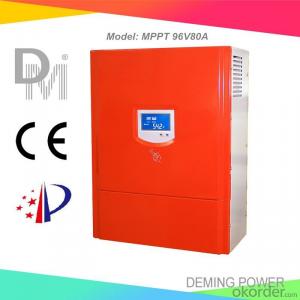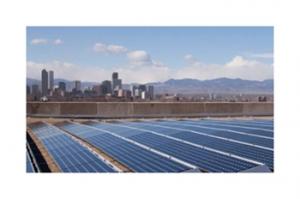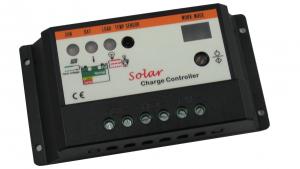10A MPPT Solar Charge Controller 96V 80A for Solar Power System
- Loading Port:
- Qingdao
- Payment Terms:
- TT OR LC
- Min Order Qty:
- 1 PCS
- Supply Capability:
- 1000 PCS/month
OKorder Service Pledge
OKorder Financial Service
You Might Also Like
Properties of the solar charge controller
1. Design for off-grid solar power system.
2. Applicable to different kinds of batteries.
3. Adopts MPPT technology (Maximum Power Point Tracking). The advanced tracking algorithm make the solar module operate at ideal voltage which the solar modules can produce the maximum available power.
4. Modular design with simple structure and easy maintenance.
5. Automatic power control function.
6. LCD display: Solar panel current, solar panel voltage, solar panel power, battery group voltage, charge current.
7. Perfect protection function: Solar reverse charge protection, Solar reverse connection protection, Battery reverse connection protection, Battery overcharge protection, Battery over current protection etc ,thus the system has higher reliability.
Technical parameters of the solar charge controller
Model | 96V80A | |||||
Battery group rated voltage | 96Vdc | |||||
PV Rated current | 80A | |||||
PV open circuit voltage | 400V | |||||
PV Max. power | 7680Wp | |||||
Input PV module road number | 1 | |||||
Function | MPPT charge mode, auto stop charge, auto recharge voltage; Protection: connecting contrary, over current, short circuit, over heat etc. | |||||
Display mode | LCD | |||||
Display content | solar panel voltage, solar panel current, solar panel power, battery voltage, charge current | |||||
MPPT DC voltage range | 80-116Vdc | |||||
Floating Charge Voltage (adjustable) | 110Vdc | |||||
Stop charge voltage | 116Vdc±1% | |||||
Recharge voltage | 108V±1% | |||||
Voltage drop between PV and battery | 1.5V | |||||
Max itself power consumption | 100mA-150mA | |||||
Work environment temperature | -30-60°C | |||||
Relative humidity | 90% No condensation | |||||
Applicable altitude | 3000m The rated power should be reduced when it is higher than 2000m | |||||
Noise (1m) | 40dB | |||||
Degree of protection | IP20(Indoor) | |||||
Cooling method | Forced air cooling | |||||
*Communication interface (optional) | RS485/USB/GPRS/Ethernet | |||||
*Temperature compensation(optional) | -4mv/°C/2V,-35°C~+80°C,Accuracy:±1°C | |||||
Product size (mm) | 480*370*160mm | |||||
Product Weight(kg) | 12kg | |||||
*Above parameter only for reference. Could be custom made to user specifications.
- Q: How do I troubleshoot common issues with a solar controller?
- To troubleshoot common issues with a solar controller, you can follow these steps: 1. Check the connections: Ensure all cables and connectors are securely plugged in and free from any damage or corrosion. 2. Examine the solar panels: Inspect the panels for any physical damage or debris that may be obstructing sunlight. Clean them if necessary. 3. Verify battery connections: Ensure the battery terminals are clean, tight, and properly connected. Loose or corroded connections can affect the controller's performance. 4. Check battery voltage: Measure the voltage of the battery using a multimeter. If it's significantly lower than expected, the battery might be faulty or needs charging. 5. Inspect the controller display: Look for error codes or warning messages on the controller's display. Refer to the manufacturer's manual to understand the meaning behind these indications. 6. Reset the controller: Some issues can be resolved by resetting the controller. Disconnect the solar panels and battery, wait for a few minutes, and then reconnect them. 7. Monitor the charge controller: Observe the controller's behavior during different times of the day. If it's not charging the battery or regulating the voltage properly, it might be defective and need replacement. 8. Consult the manufacturer: If the above steps don't resolve the issue, contact the manufacturer or consult their customer support. They can provide specific troubleshooting advice or recommend professional assistance if needed.
- Q: What is the maximum wire size that can be connected to a solar controller?
- The maximum wire size that can be connected to a solar controller depends on the specific solar controller model and its specifications. It is important to consult the manufacturer's documentation or user manual to determine the maximum wire size that can be used with a particular solar controller.
- Q: How does a solar controller handle the protection against battery reverse polarity?
- A solar controller handles the protection against battery reverse polarity by incorporating a built-in diode or a solid-state switch. This device ensures that the current flows in the correct direction, preventing any damage to the battery caused by reverse polarity.
- Q: How does a solar controller prevent undercharging of batteries?
- A solar controller prevents undercharging of batteries by regulating the amount of electrical energy sent to the batteries from the solar panel. It monitors the battery voltage and adjusts the charging current accordingly, ensuring that the batteries receive the optimal amount of charge to prevent undercharging.
- Q: What is the maximum discharge voltage of a solar controller?
- The maximum discharge voltage of a solar controller typically depends on the specific model and manufacturer. It can range from around 12 volts to 48 volts or higher, depending on the system's design and intended usage.
- Q: What is the maximum current rating of a solar controller?
- The maximum current rating of a solar controller can vary depending on the specific model and type of controller. It typically ranges from 10 amps to 60 amps, but higher-rated controllers are also available for larger solar systems.
- Q: Can a solar controller be used with solar-powered indoor educational institutions?
- Yes, a solar controller can be used with solar-powered indoor educational institutions. A solar controller is responsible for regulating and managing the flow of electricity from solar panels to the battery bank. It ensures that the battery is charged efficiently and protects it from overcharging or discharging. Therefore, even if the solar panels are installed indoors, a solar controller can still be utilized to optimize the energy generation and storage process, making it suitable for solar-powered indoor educational institutions.
- Q: Can a solar controller be used with a solar-powered air purifier?
- Indeed, the integration of a solar controller with a solar-powered air purifier is feasible. The solar controller plays a pivotal role in governing the electricity transmission from the solar panels to the air purifier, thereby optimizing the utilization of the generated power. Additionally, it assumes the responsibility of overseeing and managing the battery charging procedure, averting overcharging issues and safeguarding the longevity of the battery. Consequently, the utilization of a solar controller empowers the solar-powered air purifier to function seamlessly and proficiently, harnessing solar energy to cleanse the air without relying on grid electricity.
- Q: What is the maximum voltage and current rating for a solar controller?
- The specific model and manufacturer of a solar controller can cause variations in its maximum voltage and current rating. Generally, solar controllers are capable of handling voltage ratings up to 150 volts or even higher. In terms of current ratings, they can typically manage currents of 60 amps or more. It is essential to recognize that these ratings can vary depending on the design and capabilities of the solar controller. As a result, it is vital to consult the manufacturer's specifications or user manual to determine the precise maximum voltage and current rating for a specific solar controller model.
- Q: How does a solar controller handle battery capacity testing and calibration?
- The management of battery charging and discharging in a solar power system is overseen by a solar controller. To conduct battery capacity testing and calibration, the solar controller utilizes several important techniques. First and foremost, battery capacity testing is performed by the solar controller. This involves discharging the battery in controlled conditions to ascertain its real capacity. The controller may periodically conduct this test to evaluate the battery's well-being and ensure accurate monitoring of its capacity. Throughout the test, the solar controller accurately calculates the battery's capacity by monitoring its voltage, current, and temperature. Moreover, the solar controller often incorporates features for battery capacity calibration. This allows the controller to adjust its charging and discharging algorithms based on the battery's actual capacity. By calibrating the system to match the battery's true capacity, the solar controller can optimize the charging process, prevent overcharging or undercharging, and prolong the battery's lifespan. Calibration may involve modifying charge and discharge thresholds, compensating for temperature fluctuations, and fine-tuning charging parameters to align with the battery's unique characteristics. To effectively handle battery capacity testing and calibration, a solar controller typically requires precise voltage and current sensors, as well as temperature sensors to monitor the battery's conditions. These sensors assist the controller in collecting the necessary data for testing and calibration, ensuring accurate and reliable measurements. It is important to note that the specific methods and features for battery capacity testing and calibration may vary among different solar controller models and manufacturers. In conclusion, a solar controller manages battery capacity testing and calibration by utilizing battery capacity testing procedures to evaluate the battery's health and accurately determine its capacity. The controller also integrates calibration features to adjust charging and discharging algorithms based on the battery's actual capacity, optimizing the system's performance and extending the battery's lifespan.
Send your message to us
10A MPPT Solar Charge Controller 96V 80A for Solar Power System
- Loading Port:
- Qingdao
- Payment Terms:
- TT OR LC
- Min Order Qty:
- 1 PCS
- Supply Capability:
- 1000 PCS/month
OKorder Service Pledge
OKorder Financial Service
Similar products
Hot products
Hot Searches
Related keywords






























